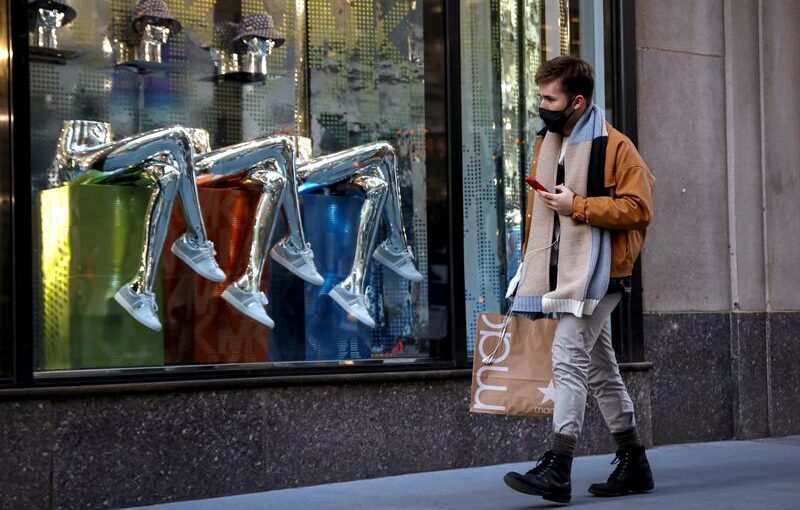WASHINGTON (Reuters) – Fewer Americans filed new claims for unemployment benefits last week amid falling COVID-19 infections, but the near-term outlook for the labor market is unclear after winter storms wreaked havoc in the South region in the middle of this month.
Still, the decline in claims to a three-month low reported by the Labor Department on Thursday suggested the labor market was slowly regaining traction, in line with the broader economy, after hitting a pothole in late 2020. Other data showed a solid increase in demand for U.S.-manufactured goods in January.
The reports followed on the heels of news last week that retail sales increased by the most in seven months in January, and could prompt economists to further upgrade their growth estimates for the first quarter.
The flow of upbeat economic news mostly reflects nearly $900 billion in additional pandemic relief provided by the government in late December and the reopening of many services businesses as the winter coronavirus wave recedes. The U.S. Congress is considering President Joe Biden’s $1.9 trillion recovery plan.
Initial claims for state unemployment benefits fell 111,000 to a seasonally adjusted 730,000 for the week ended Feb. 20, the lowest level since November. Economists polled by Reuters had forecast 838,000 applications in the latest week.
Unadjusted claims decreased 131,734 to 710,313 last week. There was sharp decline in filings in Ohio, which had been plagued by fraudulent claims.
“The drop may be signaling a turning point for labor market conditions; however, the data continue to suffer from noise related to issues of backlogs and fraud,” said Nancy Vanden Houten, lead economist at Oxford Economics in New York. “We expect a more sustainable labor market recovery to take hold closer to mid-year with broader vaccine distribution and the arrival of more fiscal support.”
Including a government-funded program for the self-employed, gig workers and others who do not qualify for the regular state programs, 1.2 million people filed claims last week.
Though claims have dropped from a record 6.867 million last March when the pandemic hit the United States’ shores, they remain above their 665,000 peak during the 2007-09 Great Recession.
In the coming week, claims could be boosted by the stormy weather in the South, which left large parts of Texas in the dark and without water for days. Unadjusted claims for Texas fell last week.
U.S. stocks opened lower. The dollar fell against a basket of currencies. U.S. Treasury yields were higher.
STRONG MANUFACTURING
A resurgence in COVID-19 infections toward the end of last year and delays in providing more fiscal stimulus sapped considerable momentum from the economy in the fourth quarter, other data on Thursday confirmed.
Gross domestic product increased at a 4.1% annualized rate, the Commerce Department said in its second estimate of fourth-quarter GDP growth. That was a slight upward revision from the 4.0% pace reported last month. The economy grew at a record 33.4% rate in third quarter.
The economy’s struggles in the final three months of 2020 are mostly in the rear view mirror. Daily coronavirus cases and hospitalizations have dropped to levels last seen before the Thanksgiving and Christmas holidays, allowing more services businesses to reopen.
The sharp rebound in retail sales and the White House’s proposed massive fiscal stimulus have prompted economists to boost their first-quarter growth estimates to as high as a 6% rate from as low as a 2.3% pace.
The growth outlook for this quarter also got a lift from a third report from the Commerce Department on Thursday showing that orders for non-defense capital goods excluding aircraft, a closely watched proxy for business spending plans, rose 0.5% last month. These so-called core capital goods orders jumped 1.5% in December.
Core capital goods orders surged 8.3% year-on-year in January, underpinning manufacturing, which accounts for 11.9% of the U.S. economy. With many Americans remaining at home, the pandemic has shifted demand to household goods like electronics from services such as airline travel and hotel accommodation.
Shipments of core capital goods accelerated 2.1% last month. Core capital goods shipments are used to calculate equipment spending in the government’s GDP measurement. They increased 1.0% in December.
Source: Read Full Article
